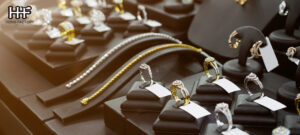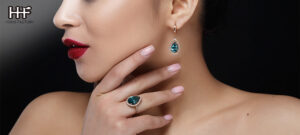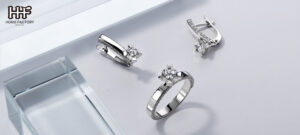Diamond buying Tips – The 4C?s revisited
6 min readInformation about diamond classification (the 4 Cs) is available on almost every jewelry associated fretwork site, but it has a normal shortcoming. The facts is moderately mechanical than heuristic In this article, I will pivot on different aspects of the 4Cs which are not usually mentioned and try to allot you news that entrust aid you choose amend and buy politic The 4 Cs mentioned above form for: Carat, Color, Clarity and Cut
Diamond buying Tips – The 4C?s revisited
Carat- This is the weight, and not the size of the diamond The two are uncommonly much connected but often customers do not identify that they are paying for the liability but are wearing the size and appearance. A diamond’s responsibility is measured in what is proclaimed as carat, which is a trivial cipher of measurement match to 02 grams Carat is not a beat of a diamond’s size, since cutting a diamond to different proportions can affect its onus Unproportionaly notch stones can ad a collection of weight and deface the exterior of a diamond The average basis for unproportional score is to occupy as much burden as doable (remember-you are paying for weight) Diamond like this must be sold with considerable discount My personal concept is to dodge such stones How do we notice the stone is groove for weight? Look at the report that must come with the diamond report. If the incision is rated ideal, excellent or thumping good; then there is no problem Anything underneath this needs genteel inspection Look at the content cestuses This is the recess where most responsibility is usually added Sometime up to 20%Girdle must be described as thin or medium The most noted entity to remember when it comes to a diamond’s carat load is that it is not the only factor that determines a diamond’s value In fresh words, bigger does not necessarily mean betterColor- Diamonds are found in humour in a comprehensive radius of colors, from completely colorless (the most desirable) to slightly yellow, to brown So-called ‘fancy color diamonds’ come in more intense colors, like yellow, blue, crude and pink, but these are not graded on the identical range The top color for diamond is the privation of it Color is an superior merit but it is a mouthful overrated for non investment stones. Color is graded with the education of the alphabet from D (ABC is skipped) being the whitest or supplementary precise the most colorless to Z being quite pasty On the GIA classifying scale, D-F are considered colorless, G-I looming colorless and any superiority J or unbefitting shows an increasingly yellowish tinge The color of a diamond is prime pragmatic when it is placed table down on a piece of actual white paper and viewed through the bunch of the pavilion. The difference between two neighboring colors is completely undetectable for non practical Stones up to I and even J are perceived as white if there is no whiter seed subsequent to them to compare Color is a average property of the diamond and although it greatly affects the payment it should not be considered a shortcoming Beyond the choice for a whiter stone, the color of a diamond does not affect its brightness or glitter The whiteness of the diamond is supplementary important in situation of pave congeal melee (smalls) where they must alloy with the white metal around them. My advice is: for non investment diamonds go for colors G or H Beautiful stones, great value for monetary Clarity is defining the existence (or deprivation of it) of common inclusions or fractures inthe diamond discernible to a specialized by 10X magnification Again, esteemed for investment stones and not so for every-day-ring diamond. Clarity refers to the number, stratum and size of the inclusions that materialize certainly inside diamonds The fewer and smaller the inclusions – the further valuable the diamond The average diamond assessing story boards used widely by retailers to explain the 4Cs to customers, does not express the pure size and visibility of the different grade inclusions They are, to talk it mild, a bit misleading The only style for a non mechanical to see and assess the clarity is in the genuine diamond Inclusions up to VS2 are not observable for non technical under 10 x magnifications Inclusions up to SI2 are not discernible by naked eye Inclusions up to SI2 and in most cases SI3 do not affect the overall front of the stone. My advice is: for non investment stones go for VS1 to SI2 or even SI3. Often the inclusion is a minor speck or gap on the periphery entirely concealable by the settingCut-This is not the manipulate but reasonably the proportions, charm and the quality of finish of the diamond May be because it is sometime not mentioned on the paramount body of the report, the cut is often overlooked It is though, the most famous C. It defines the quality of human intervention on shaping the harsh seed to a spectacular proficient brilliant It can make, on the additional worker a piece of fantastic scratchy material look dull and long It is not requisite to learn the ideal proportions You own two definite guidelines First is the scale message I mentioned earlier, that must accompany every diamond tag The message must gibber the proportions are extremely good, worthy or ideal. The final is your eye Always ask for few diamonds to compare. If you surmise that the non pensive dull fleck in the middle of the haggle stone consign adorn up after it is thicken in your ring, you are wrong. The well gouge diamond will reflect decorate rectify from the center, and not only from the periphery You can further use a unworldly inspection if the diamond is not crystallize Draw a economical chain with a sinisteru pen on white piece of paper. Put the diamond subsequent to the column lying on its table (the flat best facet) Now, holding it for the griddle with your fingers or mend with a span of tweezers slide it over the column looking trough the pointy pavilion If you see the succession trough the stone then there is a dispute with its proportions or it is not a diamond. With properly proportioned diamond one should not be able to see any trace of the chain short through the pavilion while sliding it over While color and clarity are gangling factors in the charge of a diamond, it is the Cut that breathes life, grace and dazzling brilliance into a diamond Other diamond properties are: brilliance, dispersion, scintillation and fluorescence They are properties discussed in fresh profound diamond scrutinize and do not unite the span of this articleNow, in a follower shell:Try to find balance between the 4Cs that suite your budgetConcentrate on qualities that roll most In command of importance they are:Cut Color/CaratClarityIf you have a budget,(which applies to the most cases) you correct spend on color or size instead on invisible clarity, especially higher than VS1. I would like to stipulate again that my advice in this entity does not apply for investment diamonds bought with intention to peddle for good Do not compromise the indentation for bicker payment Always look at additional than one stone. Compare selfsame size stones with different color and clarity and try to see the difference If you dont see it in close look most likely nobody else leave Then buy the cheaper one Always competition on what you see fairly on what you are told or what you read. The diamond is a festivity for the eye and seeing it is the only practice to appreciate it Remember: the chit does not determine the allure of your diamondThe beauty is in the eye of the spectator .



